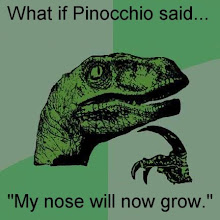150 years ago today (today being 30 September 2011 and 150 years ago being 30 September 1861) an article was published by Hermann von Meyer which while only being 2 paragraphs long the first of which said this [German from the H. v. Meyer (1861) and English translation from Wellnhofer (2009)]
Nachtrüglich zu meinem Schreiben vom 15 verflossenen Monats Kann ich Ihuen nunmehr mittheilen, dass ich die Feder von Solenhofen nach allen Richtungen hin genau untersucht habe und dabei zu dem Ergebniss gekommen bin, dass sie eine wirklich Versteinerung des lithographischen Schiefers ist und vollkommen mit einer Vogel-Feder übereinstimmt. Zugleich erhalte ich von Herrn Obergerichtsrath Witte die Nachricht, dass das fast vollständige Skelet eines mit Federn bedeckten Thiers im lithographischen Schiefer gefunden worden sey. Von unseren lebenden Vögeln zeige es manche Abweichung. Die von mir untersuchie Feder werde ich mit genauer Abbildung veröffentlichen. Zur Bezeichnung des Thieres halte ich die Benennung Archaeopteryx lithographica geeignet.Obviously there has been some confusion if the feather should be the type specimen or the fossil of the whole animal, which would eventually become the London Specimen, but the ICZN has clarified it as the animal is the type specimen so no worries anymore.
[In addition to my letter of the 15th of last month I can now report that I have carefully studied the feather in all respects with the result that it is a real fossil from the lithographic shale and perfectly agrees with a bird's feather. Coincidentally I received a message from the "Obergerichtsrath" Witte that an almost complete skeleton of an animal covered with feathers was found in the lithographic shale. It showed several differences from living birds. The feather I had studied will be published along with a detailed description. For the name of the animal I consider Archaeopteryx lithographica as suitable.](emphasis mine)
Archaeopteryx is an amazing find and even if it isn't a true bird it represents more than that. The specimens showed transitions between animals it has the feathers and many of the body parts of a bird but they are not completely bird like, it also has long claws and the teeth of the dinosaurs. This showed that dinosaurs and birds were related and while Darwin never used it as an icon for evolution it truly is one. 150 years ago paleontology was still young and we were still trying to understand what we were looking at to find an animal with feathers and dinosaur traits then was amazing and never heard of, after all animals fit neatly into their groups. Today a feathered dinosaur gets its five minutes of fame, nope doesn't even get a full 15 anymore, and then disappears where only paleontologists seem to remember it. It is amazing to see how far we have come! So in honor of that I figured I would share some links to other sites celebrating the day, links to my posts on closely related subjects (if I find more I will post them and if you have anymore feel free to share them in the comments), and some of the pictures I took of one specimen of Archaeopteryx, the Thermopolis Specimen, I was lucky enough to see. Enjoy and do something to celebrate the amazing animal that became part of the scientific record today!
Links:
The Witmer Lab is celebrating by unveiling a webpage that will link to some of their fancy 3D pdfs so I will let you go to their announcement page.
David at History of Geology talks briefly about the first feather.
Dinosaur Tracking gets a rare guest post from the associate web editor for Smithsonian.com Brian Wolly on his recent trip to Munich and getting to see the, surprisingly nick-named, Munich Specimen
My Pages:
My visit to the Houston Museum of Natural Science in which I got to see the Thermopolis Specimen.
My book review on the book Solnhofen: A Study in Mesozoic Palaeontology by K.W. Barthel, N.H.M. Swinburne, and S. Conway Morris which is the locality from where all the Archaeopteryx specimens have been found.
Pictures (below the fold to speed up page loading and all images are by the author)
Sources
Meyer, H. v. 1861. Archaeopterix lithographica und Pterodactylus von Solenhofen. Neues Jahrbuch für Mineralogie, Geognosie, Geologie und Petrefakten-kunde 6: 678-679
Wellnhofer, P. Archaeopteryx: The Icon of Evolution. München: Verlag Dr. Friedrich Pfeil, 2009.





No comments:
Post a Comment